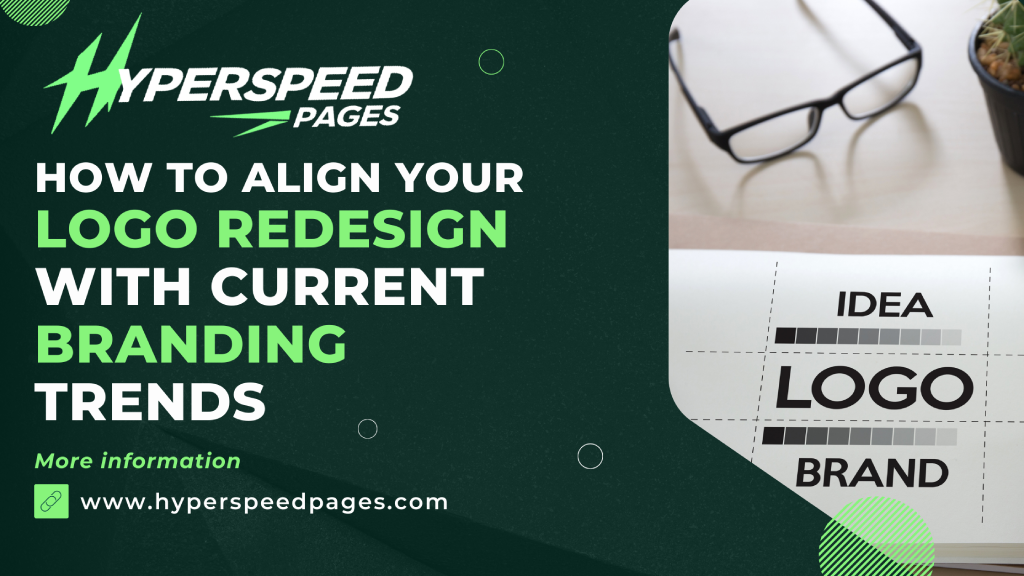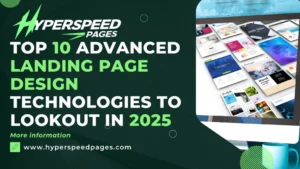
A logo is more than just a symbol; it’s the visual embodiment of your brand’s identity. It’s the first impression you make on potential customers, the cornerstone of your brand recognition, and the silent ambassador that communicates your values and mission. Whether a website, a physical product or even something too specific as a digital marketing landing page, logo plays a crucial role to communicate you and your services.
The Importance of Logo Redesign
A logo is more than just a graphic; it’s a representation of your brand’s values, mission, and personality. Over time, factors such as market dynamics, design trends, and business growth can necessitate a logo redesign. Here are some key reasons to consider a logo redesign:
- Rebranding: Shifts in company strategy, target audience, or market positioning may require a new logo to reflect these changes.
- Modernization: Updating an outdated logo to align with contemporary design aesthetics and technology.
- Expansion: Entering new markets or product lines may call for a logo that resonates with a broader audience.
- Differentiation: Ensuring your logo stands out in a crowded marketplace and distinguishes your brand from competitors.
When is a Logo Redesign Necessary?
Before embarking on a redesign journey, it’s crucial to identify the need for a change. Consider these telltale signs:
- Outdated Aesthetics: If your logo appears dated or fails to resonate with modern design sensibilities, it’s time for a refresh.
- Brand Evolution: A significant shift in your brand’s mission, target audience, or market positioning may necessitate a logo that better reflects your new identity.
- Limited Versatility: A logo that doesn’t adapt well across various platforms and mediums can hinder its effectiveness.
- Negative Feedback: If your logo consistently receives negative feedback or fails to evoke the desired emotional response, a redesign is warranted.
- Increased Competition: A strong, distinctive logo can help your brand stand out in a crowded marketplace.
Best Logo Redesign Tactics
1. Conduct a Comprehensive Brand Audit
Before the redesign process, it’s essential to conduct a thorough brand audit. This involves evaluating your current logo’s effectiveness, identifying strengths and weaknesses, and understanding how it is perceived by your target audience. For example, it can be your digital marketing landing page too!
- Customer Feedback: Gather insights from customers, employees, and stakeholders to understand their views on the current logo.
- Competitor Analysis: Analyze competitors’ logos to identify industry trends and areas where your logo can stand out.
- Brand Positioning: Assess your brand’s current positioning and how the logo aligns with your overall brand strategy.
2. Define Your Brand Identity and Goals
Clearly define your brand identity and goals for the logo redesign. This involves articulating your brand’s core values, mission, and vision, as well as specific objectives for the new logo.
- Brand Values: Identify the key values you want your logo to convey, such as innovation, reliability, or sustainability.
- Target Audience: Understand your target audience’s preferences and ensure the new logo resonates with them.
- Design Objectives: Set specific design objectives, such as simplicity, versatility, and timelessness.
3. Leverage Current Design Trends
Aligning your logo redesign with current design trends can enhance its relevance and appeal. Here are some popular trends to consider:
- Minimalism: Simplified, clean designs with minimal elements and colors. This trend emphasizes clarity and versatility.
- Geometric Shapes: The use of geometric shapes and patterns to create visually appealing and modern logos.
- Gradient Colors: Gradients add depth and dimension to logos, making them more dynamic and engaging.
- Custom Typography: Unique, custom-made fonts that reflect the brand’s personality and stand out from generic typefaces.
- Negative Space: Clever use of negative space to create hidden meanings or dual imagery within the logo.
4. Ensure Scalability and Versatility
Your new logo should be scalable and versatile, ensuring it looks great across various mediums and sizes, from business cards to billboards.
- Vector Format: Design the logo in vector format to ensure it can be resized without losing quality.
- Responsive Design: Create variations of the logo for different contexts, such as a simplified version for social media profiles.
- Color Variations: Develop color variations, including monochrome versions, to ensure the logo works well in different environments.
5. Maintain Brand Consistency
While redesigning your logo, it’s crucial to maintain brand consistency to ensure a smooth transition and avoid confusing your audience.
- Brand Elements: Retain key brand elements, such as colors or symbols, that are already associated with your brand.
- Gradual Transition: Consider a gradual logo evolution rather than a complete overhaul to maintain brand recognition.
- Brand Guidelines: Update your brand guidelines to reflect the new logo and ensure consistent use across all touchpoints.
6. Test and Iterate
Testing the new logo design with a sample audience can provide valuable feedback and help refine the design before the final launch.
- A/B Testing: Conduct A/B testing with different logo variations to see which one resonates best with your audience.
- Surveys and Focus Groups: Gather feedback through surveys and focus groups to understand audience perceptions and preferences.
- Iterative Design: Use the feedback to make necessary adjustments and improvements to the logo design.
Also Read: 2025’s most anticipated AI trends you should look out for!
Aligning Logo Redesign with Current Branding Trends
To ensure your logo redesign is successful and aligns with current branding trends, consider the following strategies:
a) Embrace Authenticity
Modern consumers value authenticity and transparency in brands. Ensure your new logo genuinely represents your brand’s values and mission.
- Authentic Storytelling: Incorporate elements that reflect your brand’s unique story and heritage.
- Transparent Communication: Communicate the reasons behind the logo redesign to your audience, building trust and engagement.
b) Focus on Digital Adaptability
With the increasing importance of digital platforms including a digital marketing landing page, your logo should be optimized for digital use.
- Mobile-Friendly Design: Ensure the logo looks great on mobile devices, considering smaller screens and different resolutions.
- Social Media Compatibility: Design variations for social media profiles, banners, and ads to maintain brand consistency across platforms.
c) Sustainability and Social Responsibility
Align your logo redesign with sustainability and social responsibility trends to resonate with environmentally conscious consumers.
- Eco-Friendly Colors and Symbols: Use colors and symbols that reflect your commitment to sustainability.
- Social Impact: Incorporate elements that highlight your brand’s social impact and community involvement.
d) Incorporate Technological Innovations
Stay ahead of the curve by incorporating technological innovations into your logo design.
- Augmented Reality (AR): Explore AR applications that allow consumers to interact with your logo in innovative ways.
- Animated Logos: Create animated versions of your logo for use in digital marketing and social media.
e) Cultural Sensitivity
Ensure your new logo is culturally sensitive and appeals to a global audience.
- Cultural Research: Conduct thorough research to understand cultural nuances and avoid potential misinterpretations.
- Inclusive Design: Create a logo that reflects diversity and inclusivity, resonating with a broader audience.
Typography to Consider with Logo Redesign in 2025
Typography is one of the most critical components of logo design, shaping the way your audience perceives your brand. Here are key considerations for typography in 2025:
1. Custom and Bespoke Fonts
Custom typography remains a dominant trend. Creating a unique typeface tailored to your brand ensures exclusivity and memorability. Bespoke fonts can reflect brand values more intimately than off-the-shelf options.
2. Sans-Serif Dominance
Clean and modern sans-serif fonts continue to dominate logo designs. These fonts are versatile and highly legible across various screen sizes, which aligns with the digital-first nature of branding.
3. Variable Fonts
Variable fonts allow for dynamic adjustments in weight, width, and style. This adaptability is perfect for responsive logos that need to look consistent across different platforms and devices.
4. Bold Typography
Bold fonts help logos stand out, especially in saturated markets. Whether used for a wordmark or part of a combination mark, bold typography conveys strength and confidence.
5. Retro Fonts with Modern Twists
Nostalgia-driven design is gaining traction, and retro-inspired fonts infused with modern elements can connect with both older and younger audiences. This fusion of eras adds depth and personality.
6. Geometric Typography
Fonts with geometric elements—such as clean lines and structured shapes—are increasingly popular. They exude professionalism while maintaining a contemporary feel.
7. Hand-Drawn and Script Fonts
Hand-drawn or script-style fonts add a human touch, making brands feel approachable and authentic. These are particularly effective for industries focusing on creativity, craftsmanship, or personal connections.
8. Minimalist Typography
Minimalist fonts with subtle details can create a timeless and elegant appeal. Avoid excessive flourishes and focus on clean, streamlined forms.
9. Contrast and Pairing
Pairing fonts with contrasting styles—such as a bold sans-serif with a delicate serif—can create a balanced and engaging aesthetic. This strategy is effective for logos with wordmarks and taglines.
10. Typography as Art
In 2025, typography wouldn’t just be functional; but a crucial visual element. Experiment with arranging type in creative ways, such as stacking, curving, or integrating it with graphic elements.
Real-World Examples of Successful Logo Redesigns
1. Instagram
The shift from the skeuomorphic camera icon to a minimalist gradient logo showcased modernity and adaptability while maintaining a vibrant, creative identity.
2. Mastercard
Mastercard simplified its iconic interlocking circles, focusing on color and shape to maintain recognizability in a more modern, digital-friendly format.
3. Airbnb
Airbnb’s redesign introduced the “Bélo” symbol, combining elements of people, places, and love. This iconic, abstract logo tells a compelling brand story.
4. Google
Google’s switch to a sans-serif typeface signaled its evolution while ensuring readability across all digital platforms.
A successful logo redesign requires a strategic approach that balances innovation with brand consistency. Logo redesigns revitalizes a brand, but they require careful planning and execution.




